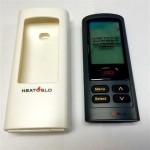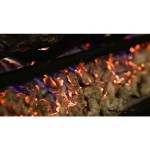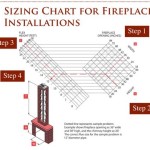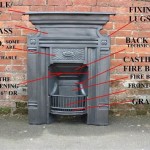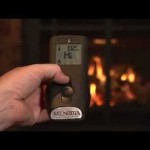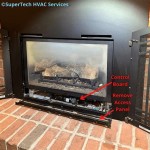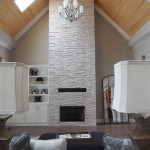Installing a Pellet Stove as a Fireplace Insert: A Comprehensive Guide
Converting an existing masonry fireplace into a more efficient heating source is a common goal for homeowners. One effective method involves installing a pellet stove directly into the fireplace opening, transforming it into a fireplace insert. This article provides a detailed guide on the process of installing a pellet stove as a fireplace insert, covering essential considerations, steps, and safety precautions.
A pellet stove insert offers several advantages over a traditional wood-burning fireplace. Pellet stoves burn small, compressed wood pellets, which are a renewable and often more readily available fuel source. They boast higher efficiency ratings, meaning more heat is generated per unit of fuel consumed, leading to lower heating costs. Furthermore, pellet stoves offer precise temperature control, automatic ignition, and often feature programmable thermostats for consistent heating. The installation process, however, necessitates careful planning and adherence to local building codes.
Key Considerations Before Installation
Before commencing the installation, several factors must be thoroughly evaluated to ensure a safe and effective outcome. Ignoring these preliminary considerations can lead to operational inefficiencies, safety hazards, or code violations.
First,
firebox dimensions
are crucial. The pellet stove insert must physically fit within the existing fireplace opening. Measure the height, width, and depth of the firebox to confirm compatibility with the chosen pellet stove model. Leaving adequate clearance space around the insert is also important to enable proper airflow and prevent overheating. Consult the pellet stove manufacturer's specifications for minimum clearance requirements.Second,
chimney inspection and cleaning
are paramount. The chimney serves as the venting pathway for combustion gases, and its condition directly impacts the safety and efficiency of the pellet stove. Schedule a professional chimney sweep to inspect the chimney flue for obstructions, cracks, or excessive creosote buildup. Creosote is a highly flammable byproduct of combustion and can pose a significant fire hazard. The chimney should be cleaned thoroughly to ensure a clear and unobstructed path for exhaust gases. In some cases, the existing chimney may require relining with a stainless steel liner that is specifically designed for pellet stoves. This is crucial because pellet stoves produce different types of exhaust than wood-burning fireplaces, and an improperly sized or lined chimney can lead to backdrafting and carbon monoxide poisoning.Third,
electrical requirements
should be assessed. Pellet stoves require electricity to power the auger, blower fan, and control panel. Ensure that a dedicated electrical outlet is available near the fireplace opening. The electrical circuit should be properly grounded and have sufficient amperage to handle the stove's power consumption. Consult the pellet stove's specifications for the appropriate voltage and amperage requirements. Installing a dedicated circuit breaker for the pellet stove is highly recommended to prevent overloading the existing electrical system.Fourth,
local building codes and permits
must be accounted for. Before any installation work begins, contact the local building department to inquire about required permits and inspections. Building codes vary by jurisdiction and may specify requirements for chimney liners, clearances, hearth protection, and electrical connections. Obtaining the necessary permits ensures that the installation complies with safety standards and avoids potential fines or legal issues.Finally,
hearth protection
should be considered. The hearth is the non-combustible surface in front of the fireplace opening. Pellet stoves generate radiant heat that can damage or ignite combustible materials. Ensure that the hearth extends sufficiently beyond the front of the pellet stove insert to provide adequate protection. Local building codes typically specify minimum hearth extension requirements based on the model of the pellet stove being installed. If the existing hearth does not meet these requirements, it may need to be extended or replaced with a non-combustible material such as tile, stone, or concrete.Step-by-Step Installation Process
Following a well-defined installation process is critical for a successful and safe pellet stove insert installation. This process includes preparing the fireplace, installing the vent, positioning the stove, and completing the electrical connection.
Step 1:
Prepare the Fireplace Opening.
Begin by thoroughly cleaning the firebox. Remove any ash, debris, or remnants of previous fires. Inspect the masonry for any cracks or damage and repair as necessary. If the fireplace has a damper, it should be secured in the open position to allow for proper venting. In some cases, it may be necessary to remove the damper completely to provide sufficient clearance for the vent pipe. This should be done carefully to avoid damaging the fireplace structure.Step 2:
Install the Vent Pipe.
The vent pipe connects the pellet stove to the chimney flue and allows for the exhaust gases to escape. Pellet stoves require a specific type of vent pipe, typically a 3-inch or 4-inch diameter, that is designed for use with solid fuels. The vent pipe should be constructed of stainless steel and be UL-listed for pellet stove applications. Carefully measure the distance from the stove's exhaust outlet to the chimney flue. Assemble the vent pipe sections according to the manufacturer's instructions, ensuring that all connections are secure and airtight. Insert the vent pipe through the fireplace opening and into the chimney flue. If the existing chimney flue is not properly sized or is in poor condition, it may be necessary to install a stainless steel liner. The liner should be installed from the top of the chimney down to the stove connection, and it should be properly insulated to prevent condensation and improve draft.Step 3:
Position the Pellet Stove Insert.
Carefully lift the pellet stove insert and position it inside the fireplace opening. Ensure that the stove is level and that it is properly aligned with the vent pipe. Connect the vent pipe to the stove's exhaust outlet, ensuring a tight and secure connection. Use appropriate fasteners, such as screws or clamps, to secure the vent pipe to the stove. Pay attention to clearances around the stove. The stove should have adequate clearance from combustible materials, such as walls, mantels, and furniture. Consult the pellet stove manufacturer's specifications for minimum clearance requirements.Step 4:
Make the Electrical Connection.
Plug the pellet stove's power cord into the dedicated electrical outlet. Ensure that the outlet is properly grounded and that the circuit breaker is switched on. Test the stove's operation by turning it on and observing its performance. Check the auger, blower fan, and control panel to ensure that they are functioning correctly. If the stove does not power on or if there are any error codes displayed on the control panel, consult the manufacturer's troubleshooting guide.Step 5:
Seal the Surround (Optional).
Some installations benefit from using a metal surround to seal the space between the pellet stove insert and the fireplace opening. The surround helps to prevent air leaks and improves the stove's efficiency. If a surround is used, ensure that it is properly installed and that it is made of a non-combustible material.Step 6:
Final Inspection and Testing.
Once the installation is complete, perform a final inspection to ensure that all connections are secure and that the stove is operating correctly. Burn a small amount of pellets to test the stove's performance and to verify that the vent is drawing properly. Monitor the stove's temperature and check for any signs of overheating or malfunction. Check for any exhaust leaks around the vent pipe connections. Have a qualified technician inspect the installation to ensure that it complies with local building codes and safety standards.Essential Safety Precautions
The installation of a pellet stove insert involves potential safety risks, emphasizing the need for adherence to safety precautions throughout the process. Neglecting these precautions can result in serious injuries, property damage, or even fatal consequences.
First,
carbon monoxide detection
is critical. Carbon monoxide (CO) is a colorless, odorless gas produced by the incomplete combustion of fuels. It is extremely dangerous and can be fatal even at low concentrations. Install a carbon monoxide detector in the same room as the pellet stove and test it regularly to ensure that it is functioning properly. Carbon monoxide detectors should be UL-listed and meet the requirements of local building codes. If a carbon monoxide alarm sounds, evacuate the premises immediately and call the fire department.Second,
regular maintenance
is essential. Pellet stoves require regular maintenance to ensure their safe and efficient operation. Clean the stove regularly to remove ash and debris. Inspect the vent pipe for obstructions and creosote buildup. Schedule a professional chimney sweep to inspect and clean the chimney annually. Follow the manufacturer's recommendations for maintenance and service intervals.Third,
proper fuel storage
is important. Store wood pellets in a dry, protected location away from combustible materials. Do not store pellets near the pellet stove or in areas where they could be exposed to sparks or flames. Keep the pellet storage area clean and free of dust and debris. Do not overfill the pellet hopper, as this can cause the stove to malfunction.Fourth,
overheating prevention
must be practiced. Avoid overloading the pellet stove with fuel, as this can cause it to overheat. Do not block the stove's air vents, as this can restrict airflow and lead to overheating. Monitor the stove's temperature and check for any signs of overheating. If the stove overheats, shut it down immediately and allow it to cool before attempting to restart it.Fifth,
child and pet safety
must be considered. Keep children and pets away from the pellet stove, as it can become very hot during operation. Install a safety screen or guard around the stove to prevent accidental contact. Teach children about the dangers of the stove and instruct them not to touch it. Supervise children and pets closely when the stove is in operation.The information provided in this article is intended as a general guide only. It is strongly recommended that homeowners consult with qualified professionals, such as licensed HVAC technicians or certified chimney sweeps, before installing a pellet stove insert. These professionals can assess the specific conditions of the fireplace and provide tailored recommendations for a safe and efficient installation.

Sawmill Creek Woodworking Community

Pellet Stove Inserts Turn Drafty Fireplaces Into Heaters Complete Home Concepts

How To Install A Pellet Vent Pipe

Pellet Stove Insert Installation Self Install Diy
Modify Existing Fireplace Zero Clearance To Install Pellet Insert Hearth Com Forums Home

Wood Stoves Pellet Gas Fireplace Inserts

Pellet Burning Fireplace Inserts Sierra Hearth And Home

Custom Installation Of Fireplace Inserts Insert Installations Sierra Hearth And Home

Fireplace Insert Installation Wood Inserts Gas Pellet And Electric

Pellet Fireplace Inserts Lopi Stoves Made In Usa
Related Posts

